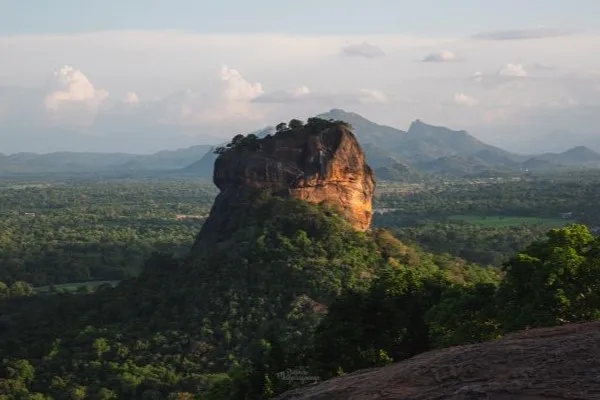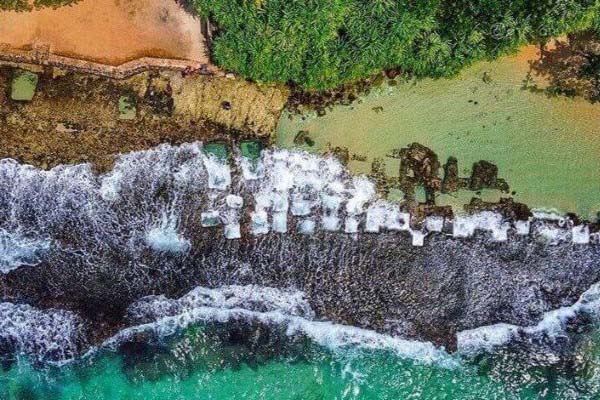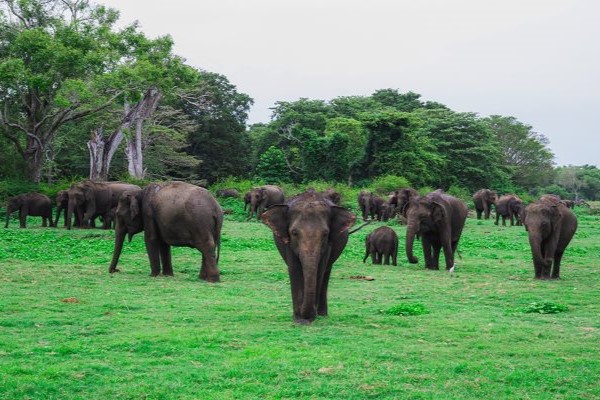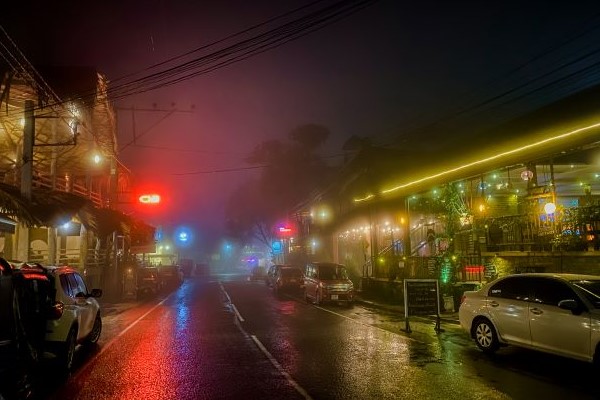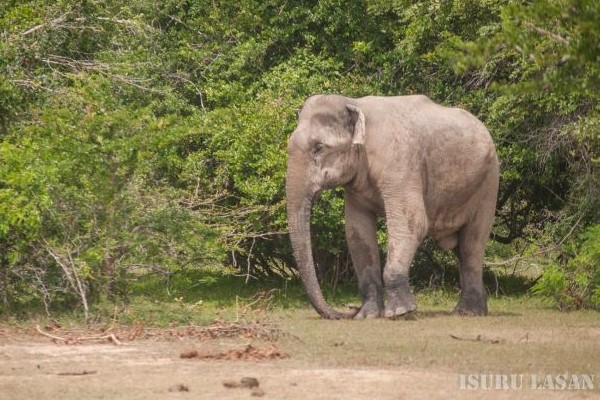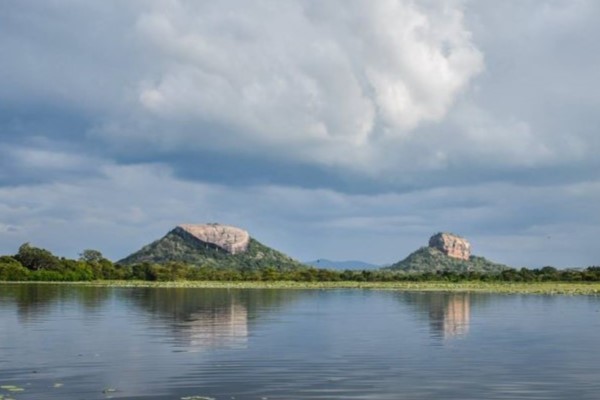Sigiriya, Sri Lanka – The Majestic Lion Rock Fortress
Sigiriya, or Lion Rock, is one of Sri Lanka’s most awe-inspiring landmarks and a UNESCO World Heritage Site. Towering 200 meters (660 feet) above the surrounding plains, this ancient rock fortress is a masterpiece of engineering, architecture, and art. Built in the 5th century CE by King Kashyapa, Sigiriya is a fusion of palatial grandeur, military strategy, and natural beauty. Today, Sigiriya is one of Sri Lanka’s top tourist attractions, attracting history enthusiasts, nature lovers, and adventure seekers from around the world. It is also an important ecological site, with protected forests and diverse wildlife.
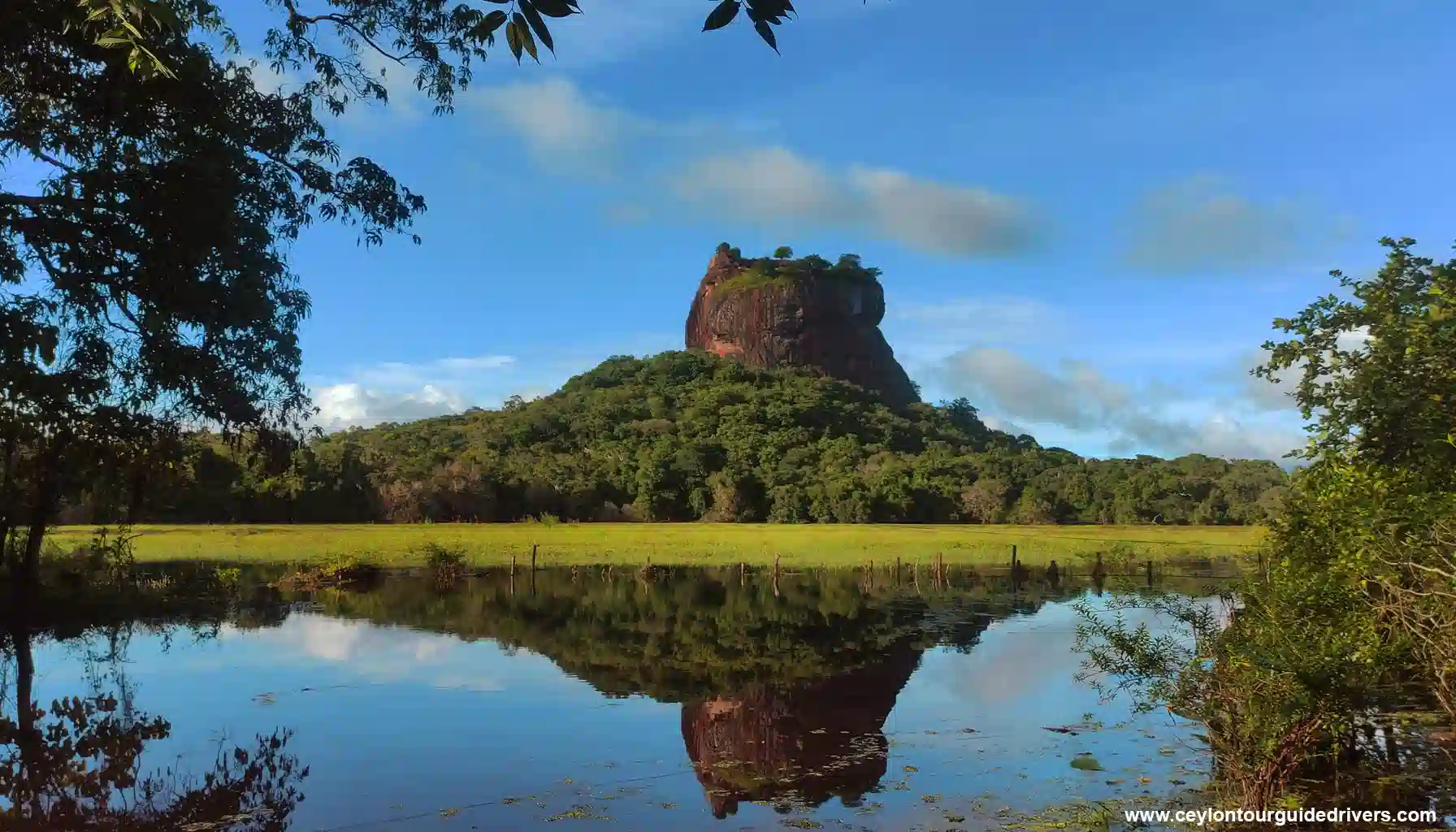
The Enigmatic History of Sigiriya
A Palace in the Sky – The Reign of King Kashyapa (473–495 CE)
Sigiriya’s origins are deeply linked to the story of King Kashyapa, who seized the throne from his father, King Dhatusena, through a brutal coup. Fearing an attack from his half-brother Prince Moggallana, Kashyapa chose Sigiriya as his fortress-capital.
Between 477 and 495 CE, he transformed the massive rock into an impenetrable citadel, complete with:
Despite its grandeur, Kashyapa’s reign ended when Moggallana returned with an army from India. In 495 CE, Kashyapa was defeated and took his own life, leaving Sigiriya to be abandoned and later converted into a Buddhist monastery.
Sigiriya’s Rediscovery & 1967 Vandalism Incident
After centuries of being lost to the jungle, British archaeologists rediscovered Sigiriya in the 19th century. However, one of the most tragic events in its modern history occurred in 1967, when vandals damaged several of the famous frescoes. These irreplaceable artworks, dating back over 1,500 years, were defaced with scratches and splashes of paint.
The incident shocked historians and conservationists worldwide, leading to stricter security measures and an intensive restoration effort. Though some frescoes were lost forever, today, visitors can still admire 21 surviving paintings, which remain a testament to Sigiriya’s artistic and historical legacy.
Sigiriya Today – A Treasure Trove of History, Nature & Conservation
Sigiriya is not only a marvel of ancient engineering and history but also a vibrant natural sanctuary, steeped in ecological significance. The site is encircled by lush forests, serene lakes, and rich biodiversity, making it a living monument to both culture and nature.
Ecological Importance & Conservation Efforts:
Sigiriya is located within the boundaries of the Sigiriya Sanctuary, a protected forest reserve that harbors a rich variety of wildlife. The sanctuary is home to iconic Sri Lankan elephants, flocks of colorful peacocks, playful monkeys, and a diverse array of bird species, including endemic and migratory birds. The rich biodiversity of the area makes it an essential ecological hotspot for researchers and nature lovers alike.
Beyond its ancient rock fortress, the Sigiriya region plays a critical role in the conservation of Sri Lanka’s unique ecosystem. Active conservation efforts aim to safeguard both the historical significance of the rock fortress and the surrounding natural environment. These initiatives include preserving the forest habitat, controlling invasive species, and promoting sustainable agricultural practices in the surrounding areas.
The growing impacts of climate change, combined with the increasing number of visitors to the site, present significant challenges to the ecological balance of Sigiriya. To counteract these threats, a range of sustainability-focused efforts are being implemented. These include managing the flow of tourists to prevent over-crowding, reducing the environmental footprint of tourism activities, and promoting eco-friendly travel practices. The preservation of the site’s delicate ecosystem remains a key priority, with local authorities and conservation groups working together to ensure the site remains intact for future generations.
In addition to the physical conservation efforts, educational programs and eco-tourism initiatives are being developed to raise awareness about the importance of preserving both the historical and natural heritage of Sigiriya. These programs aim to engage local communities and tourists in protecting the site’s cultural integrity while fostering a deeper appreciation for its surrounding environment.
Must-See Attractions in Sigiriya
Sigiriya is far more than just a rock—it is an extraordinary blend of ancient architecture, art, and natural beauty, seamlessly woven together into one of Sri Lanka’s most iconic landmarks. Rising dramatically 200 meters above the surrounding plains, Sigiriya is a monumental feat of engineering, blending intricately designed structures, stunning frescoes, and innovative water gardens into the natural landscape. This ancient rock fortress, originally constructed by King Kasyapa in the 5th century, is not merely a solitary rock formation but a meticulously planned complex that incorporates multiple layers of historical, cultural, and ecological significance.
The site boasts exceptional architectural achievements, such as the imposing lion’s gate, the ancient palace at the summit, and sophisticated defensive mechanisms. The rock itself is adorned with ancient frescoes—vivid, colorful depictions of celestial maidens that have endured centuries of weathering. Below, the famed Sigiriya Water Gardens are a testament to the sophisticated hydraulics and landscaping of the time, featuring symmetrical ponds, fountains, and water channels that reflect the genius of ancient Sri Lankan engineering.
Surrounding the fortress, the natural beauty of Sigiriya is equally awe-inspiring. The lush green forests, tranquil lakes, and diverse wildlife enrich the site, making it an unmatched fusion of human creativity and nature’s splendor. Together, these elements make Sigiriya an unparalleled masterpiece where history, art, and ecology converge in perfect harmony.
- The Majestic Sigiriya Rock – A Stairway to the Sky
- Spectacular views of the jungle and villages stretching for miles
- A challenging but rewarding climb with historical stops along the way
- The final ascent through the Lion’s Paws is a thrilling experience
- The Lion’s Paws & Grand Staircase – The Ancient Entrance
- A jaw-dropping architectural marvel that showcases ancient craftsmanship
- A perfect photo spot before the final ascent to the summit
- One of Sri Lanka’s most recognizable landmarks
- The Sigiriya Frescoes – Celestial Maidens of the Sky
- Royal concubines or court ladies
- Celestial nymphs (Apsaras)
- Depictions of fertility goddesses
- One of Sri Lanka’s greatest artistic achievements
- A rare chance to see 1,500-year-old paintings in remarkable condition
- Part of the 1967 vandalism incident, making their preservation even more significant
- The Mirror Wall – Ancient Graffiti from Over 1,000 Years Ago
- A fascinating glimpse into the past through ancient graffiti and poetry
- Shows how Sigiriya was admired by generations of travelers
- The Sigiriya Frescoes – Celestial Maidens of the Sky
- Fountains that still function today during the rainy season
- Symmetrical pools and pavilions, designed for relaxation
- Raised walkways and artificial islands
- A chance to admire Sri Lanka’s ancient water management techniques
- Peaceful surroundings that contrast with the rocky ascent
Rising 200 meters above the plains, the Sigiriya Rock is the centerpiece of this UNESCO site. To reach the top, visitors must climb 1,200 steps, passing through a series of breathtaking archaeological marvels along the way.
Why You Should See It:
At the halfway point of the climb, you will find the most iconic feature of Sigiriya—the Lion’s Paws, a colossal stone entrance once shaped like a gigantic lion.
In ancient times, travelers would have entered through the lion’s mouth, climbing a staircase into the royal palace above. Today, only the massive stone paws remain, but they still evoke the majesty of the past.
Why You Should See It:
Halfway up the rock face, you will encounter 21 surviving frescoes, painted directly onto the rock surface. These 5th-century artworks depict graceful women adorned in jewelry and colorful garments.
Though their identities remain a mystery, scholars believe they could be:
Why You Should See It:
Originally polished to a reflective shine, this stone wall once allowed the king to see his reflection as he walked past. Over the centuries, visitors etched their thoughts onto the wall, leaving behind over 1,200 inscriptions dating from the 8th to 10th centuries.
These writings reveal poems, love notes, and admiration for the frescoes, proving that Sigiriya has been a tourist attraction for over 1,000 years.
Why You Should See It:
The Water Gardens of Sigiriya are among the oldest landscaped gardens in the world. Built with advanced hydraulic engineering, they feature:
Why You Should See It:
Best Time to Visit Sigiriya
How to Get to Sigiriya
Sigiriya is more than just a historic site—it is a symbol of Sri Lanka’s rich heritage and natural beauty. Whether you are fascinated by ancient history, stunning landscapes, or incredible artistry, this legendary rock fortress is a must-visit destination.
Book a private tour with us and explore Sigiriya hassle-free!
